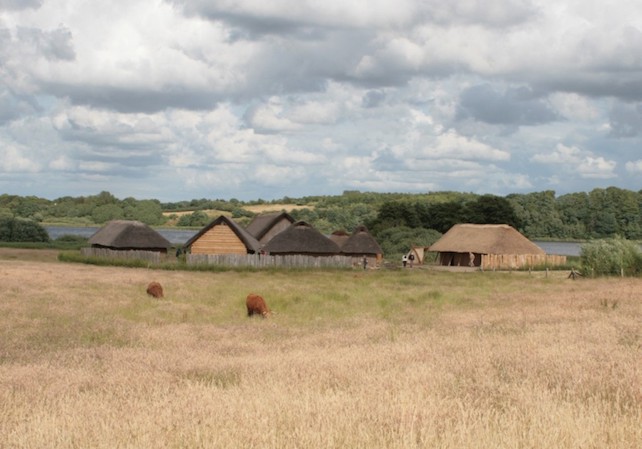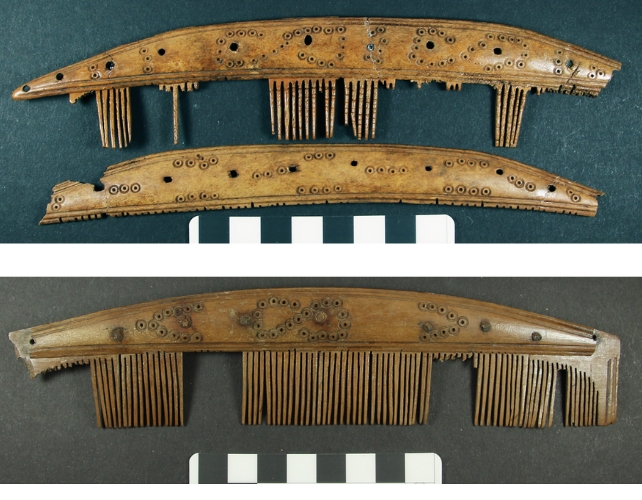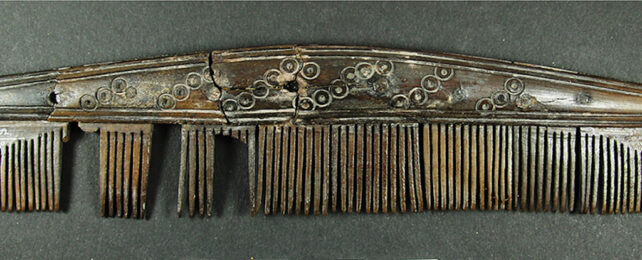The Vikings were notorious raiders, but they were traders too, establishing vast trade routes that flourished from the 8th to 11th centuries.
A new study reveals some of those connections spanned surprisingly long distances, linking large urban trading centers with rural outlands where many natural resources originated.
Researchers from the UK and Europe illustrate the scale of Viking trade by highlighting hair combs found at a former Viking trading center in present-day Germany. The combs are made from deer antlers, but from a species found hundreds of kilometers away.
One of the most important trading towns of the Viking Age was Hedeby, located near the southern end of the Jutland Peninsula, in what was then Denmark. (The site is now part of northern Germany, though the town itself was abandoned nearly 1,000 years ago.)
Hedeby was one of the largest urban settlements in Viking Age Europe, serving as a nexus between the cultural worlds of the North Sea and the Baltic Sea, as well as between Scandinavia and Northern Europe.

The town also seems to have been a hub for antler-working, the researchers note, based on some 288,000 antler discoveries recorded at the site in previous research. These findings are mostly waste material from the production of hair combs, like the one pictured above.
By studying the collagen in these antler combs, the team sought to identify which species of deer the antlers came from, thus shedding light on their geographic origin.
Using a method called Zooarchaeology by Mass Spectrometry, or ZooMS, they found that up to 90 percent of the combs were made from the antlers of reindeer (Rangifer tarandus), also known as caribou.
Because reindeer herds only lived in northern Scandinavia, this suggests either the antlers or the combs themselves were imported to Hedeby.
Previous research indicates just 0.5 percent of antler waste at Hedeby came from reindeer. And despite ample evidence of antler-working in the town, that mostly dates to later in Hedeby's heyday, with no sign of comb production in the site's earlier phases.
The researchers claim that all of this points to imported combs, though some could have been personal items owned by "mobile individuals." In either case, the combs wound up in Hedeby after being produced elsewhere, possibly hundreds of kilometers away in upland Norway or Sweden.

If the combs were imported, this also points to the existence of a long-range, large-scale trading relationship between Hedeby and the far north, the team says.
And their findings suggest it existed as early as 800 CE – just seven years after the Viking raid of Lindisfarne, England, commonly cited as the dawn of the Viking Age.
"We have begun to answer a whole range of questions about the timing of travel and trade in Viking-Age Britain and Scandinavia," says Steven Ashby, an archaeologist at the University of York.
We still have a lot to learn about life during the Viking age, Ashby and his colleagues note, including how people moved around and how generally connected the different parts of the Viking world really were.
The new study is part of a trend in research on Vikings, seeking to understand the links between urban centers like Hedeby and far northern towns such as Kaupang or Birka in Scandinavia.
"The work at Hedeby is particularly interesting, as it tells us about connections between the mountains of upland or Arctic Scandinavia and this large town at the gateway to continental Europe," Ashby says.
It also "points to a window in the ninth century when these northern links must have been particularly strong," he adds.
The study has been published in Antiquity.
